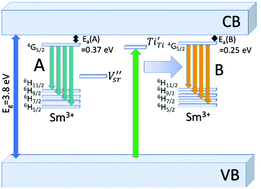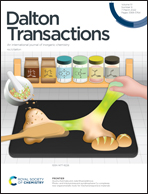Energetic structure of Sm3+ luminescence centers in Sr2TiO4
Abstract
A luminescent material based on the strontium orthotitanate (Sr2TiO4) matrix doped with 1% of a mole of samarium was obtained using the typical solid-state synthesis method under a neutral atmosphere of nitrogen. The sample was investigated using powder X-ray diffraction (XRD) and several luminescence techniques to study the phase composition, luminescence properties as well as to determine the position of the energetic states of Sm3+ in relation to the valence and conduction bands of Sr2TiO4. The XRD result shows that the product of the synthesis is pure Sr2TiO4. From the PL spectra, it can be seen that the phosphor can be effectively excited at 409 and 342 nm to emit significantly different emission spectra. The luminescence obtained under 409 nm excitation is typical of Sm3+ in Sr2TiO4 and attributed to the nonsymmetrical luminescent center (A-center). In contrast, the luminescence obtained under excitation at 342 nm originates from the symmetrical center (B-center) and has not been reported in the literature so far. The presence of the two emission centers related to Sm3+ ions in the Sr2TiO4 matrix characterized by only one crystallographic site of Sr2+ was explained by considering the different ways of charge compensation: Sm3+ in the A-center via strontium vacancy (V′′sr), and Sm3+ in the B-center via Ti3+ (Ti′Ti).



 Please wait while we load your content...
Please wait while we load your content...